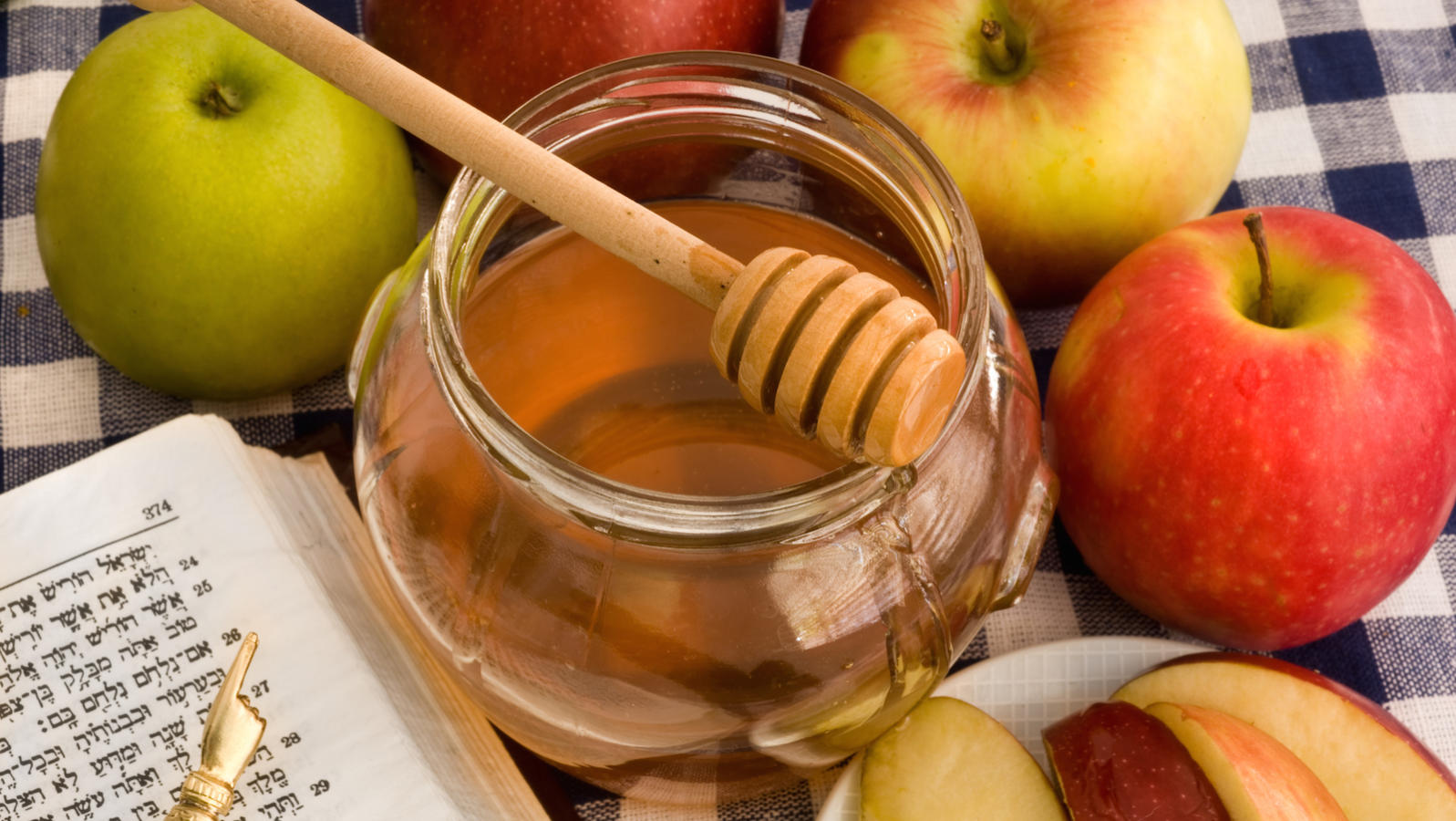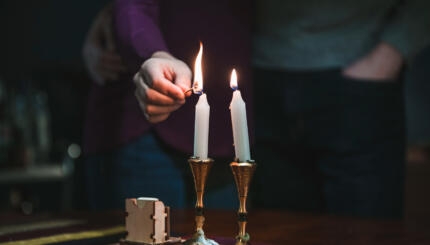The day before holds special significance and has its own special customs. In preparation for this sacred holiday the Selichot are more extensive and the shofar is not sounded.
In addition, the cover to the reading table, the parochet (curtain that covers the scrolls), and the dressing of the Torah itself are often changed to white, to represent the motifs of purity and atonement. Other customs include visiting the graves of relatives and loved ones, contributing something significant to charitable causes, and sending greeting cards.
Hatarat Nedarim, the Annulling of Personal Vows
On (the day, or evening, before) Rosh Hashanah, some people choose to perform a ritual of introspection and spiritual mediation called hatarat nedarim, the annulling of vows. The ritual covers only vows made to themselves or to God — not vows made to another person.
In hatarat nedarim an individual asks to be released from vows that may have been said in a heated moment, but were not truly of the heart, and from casual statements that may have been worded as vows, but were not intended as such. This ritual is part of Judaism’s system for giving people second chances; but of course not every vow can or will be annulled.

Help us keep Jewish knowledge accessible to millions of people around the world.
Your donation to My Jewish Learning fuels endless journeys of Jewish discovery. With your help, My Jewish Learning can continue to provide nonstop opportunities for learning, connection and growth.
In this case, a person who wishes to be released from vows finds three other people who also wish to be released from vows. One of those people makes a declaration in the presence of the three others, who serve as a beit din (literally, “house of judgment”) — a legal court according to Jewish law. After the first person is absolved of these vows by the others, another takes a turn asking for absolution while the remaining three serve as the beit din, and so on with the group.
Whether or not one uses the traditional formula found in some prayer books, it is important to practice hatarat nedarim with people who can be open and honest, as well as thoughtful, in their responses.
Reprinted with permission from Celebrating the Jewish Year (Jewish Publication Society).



